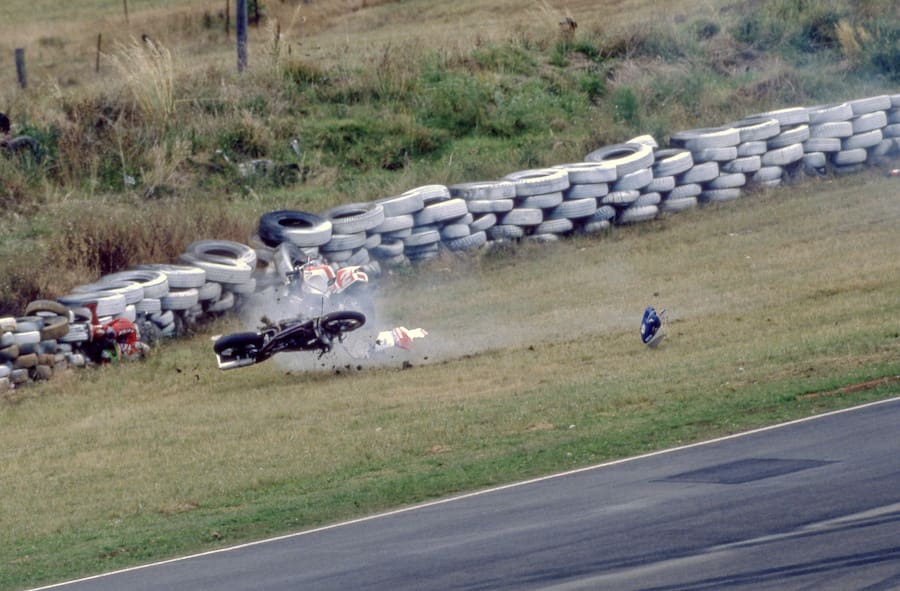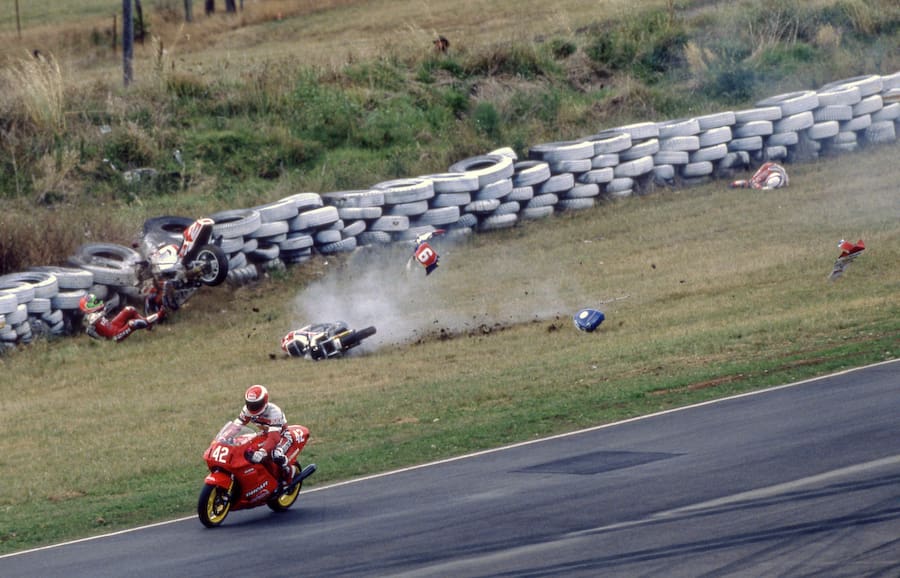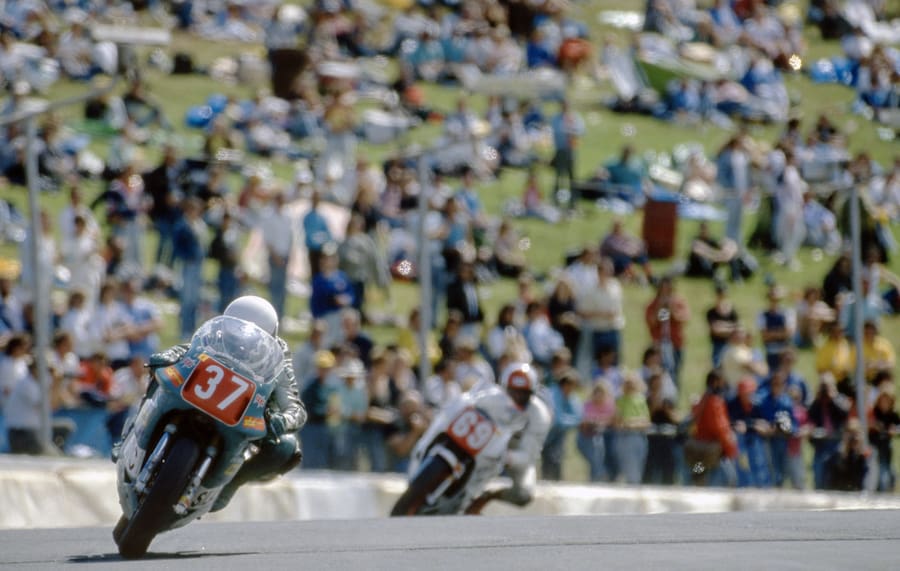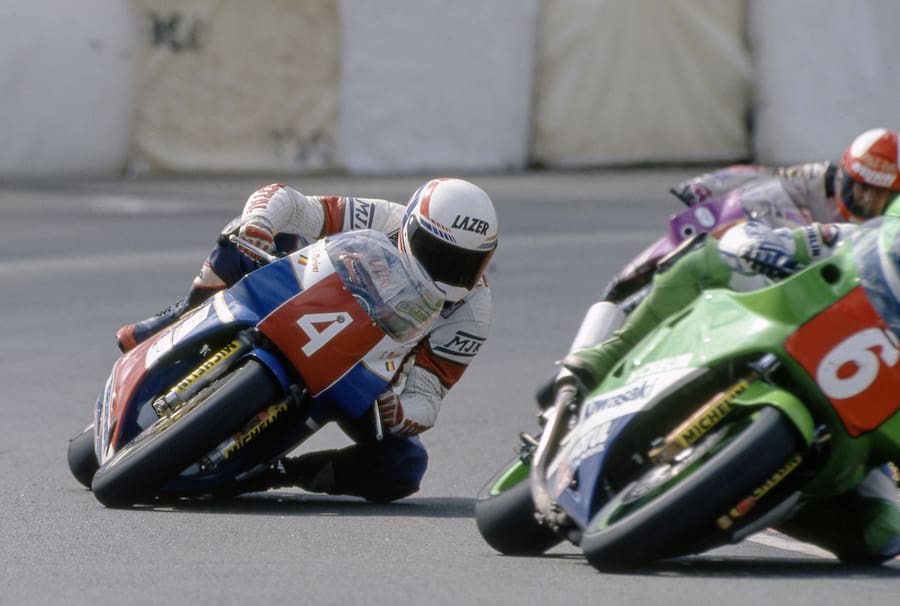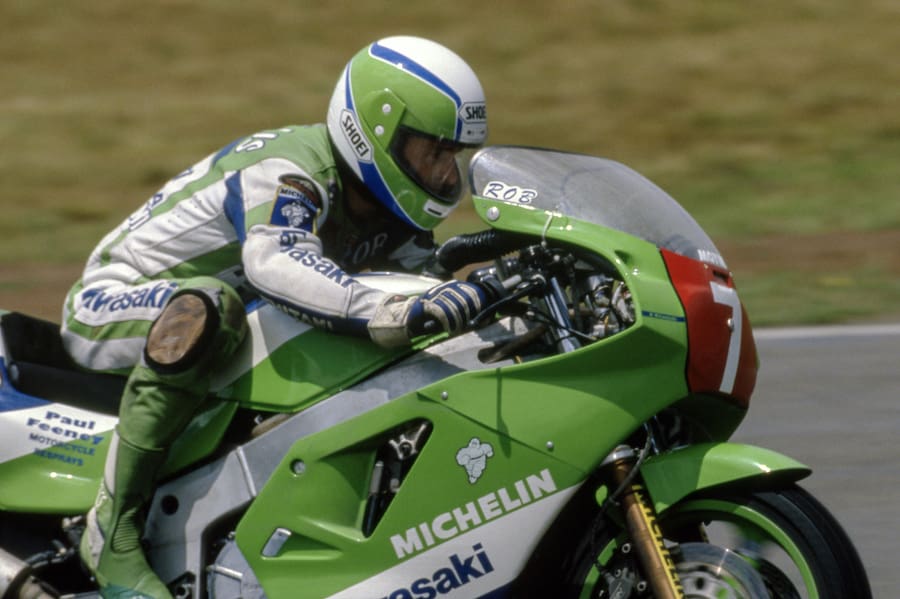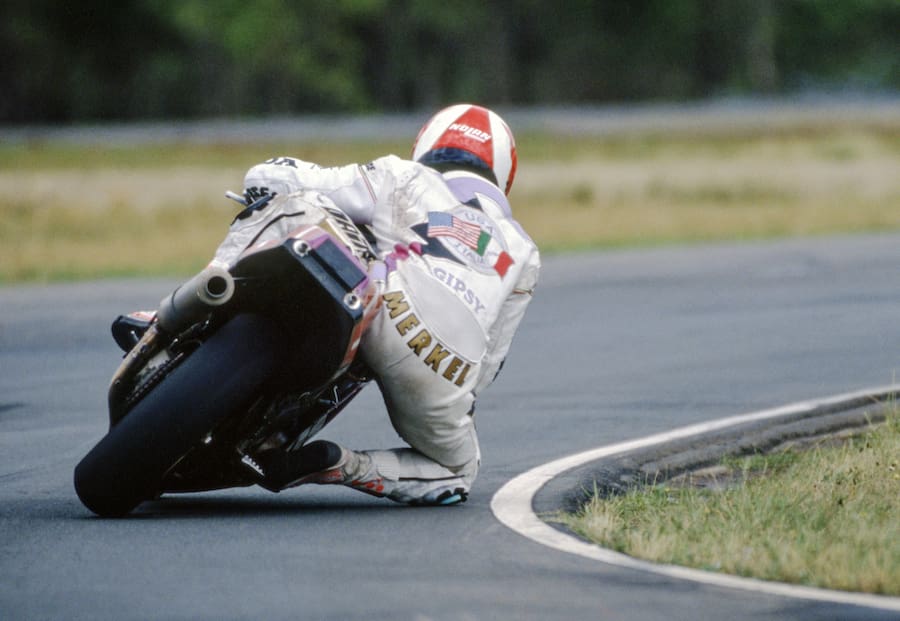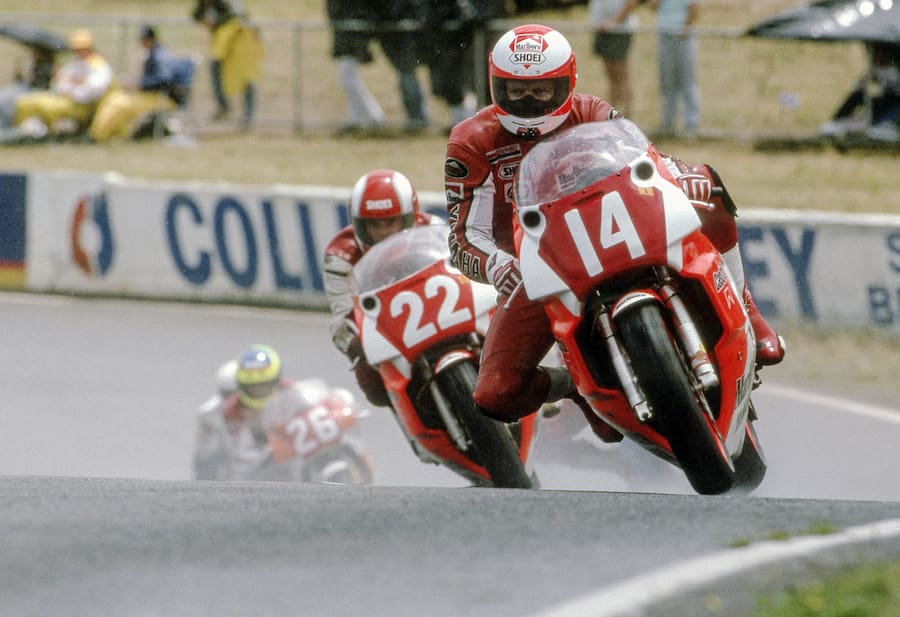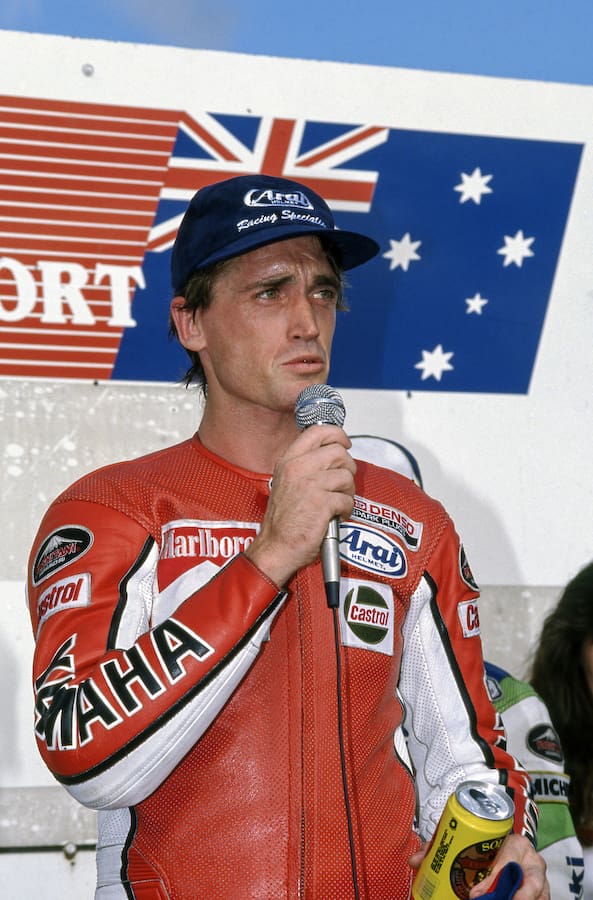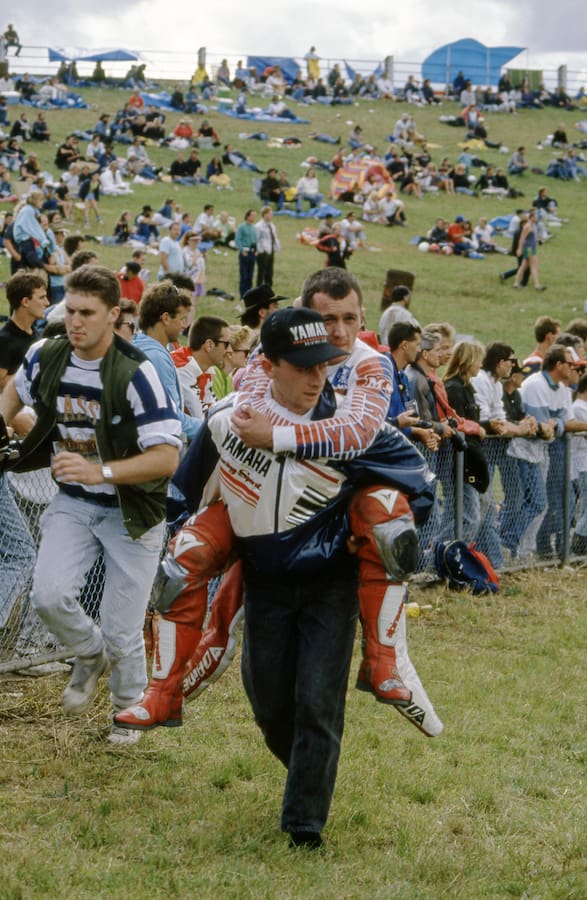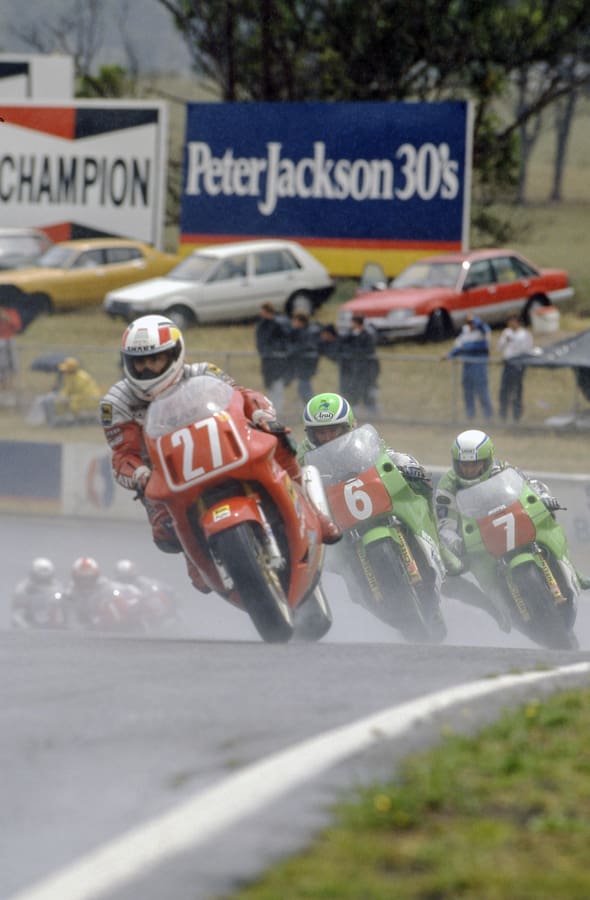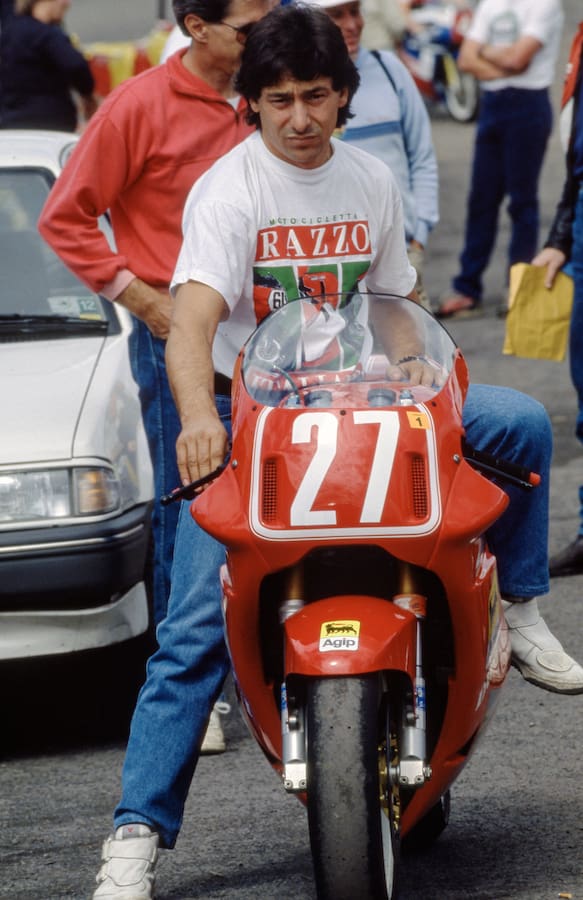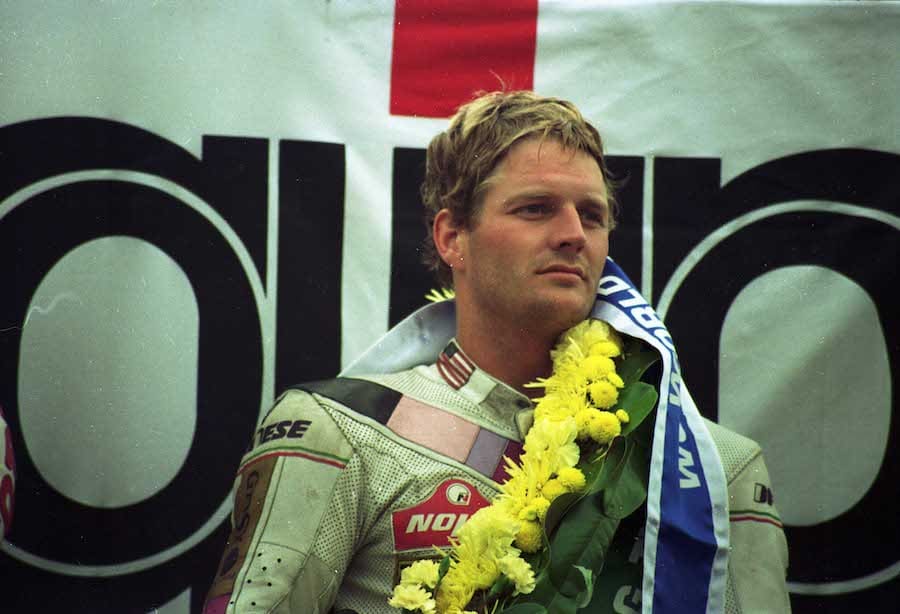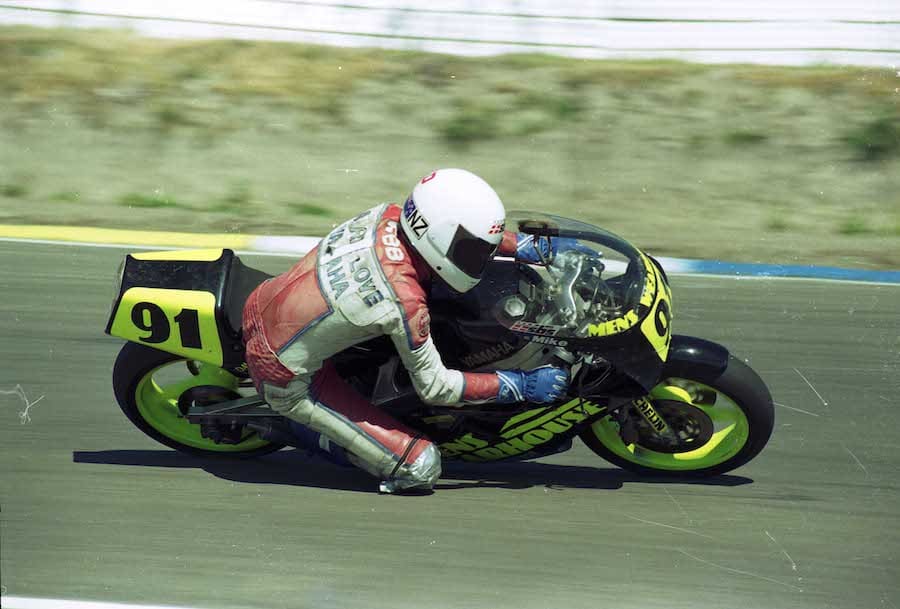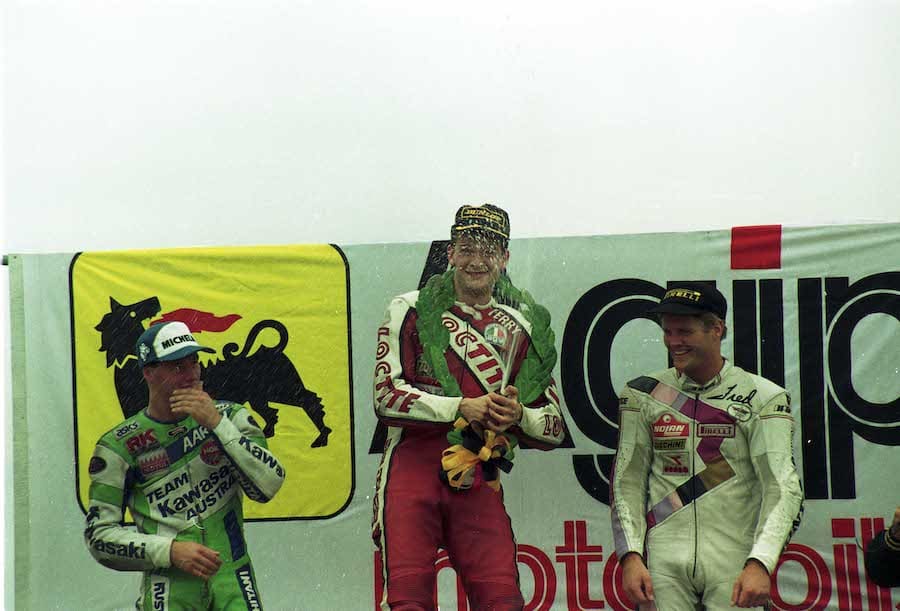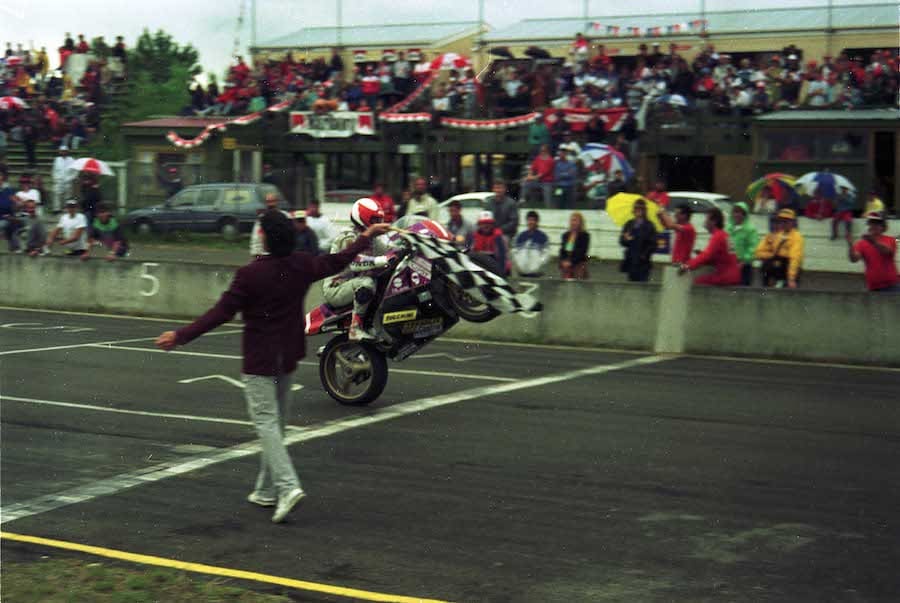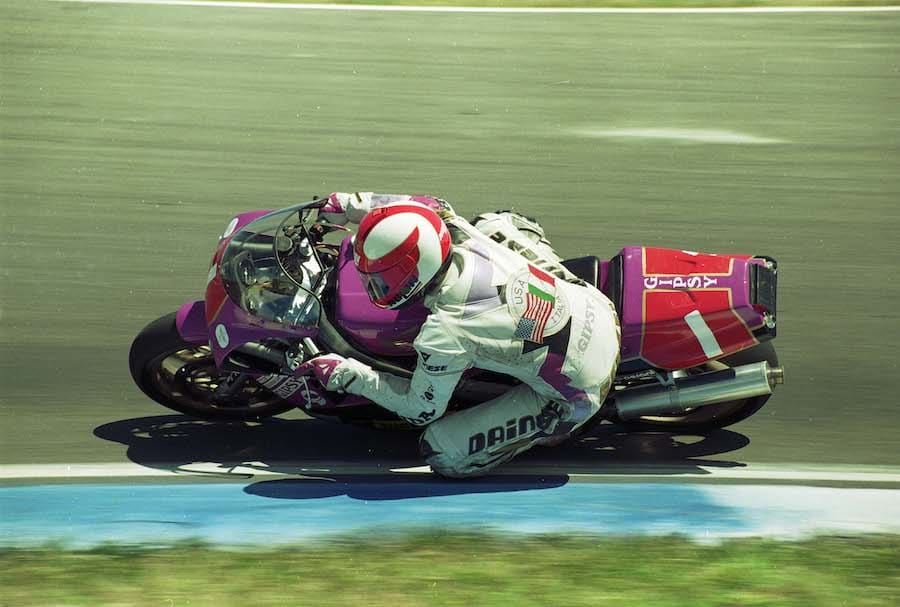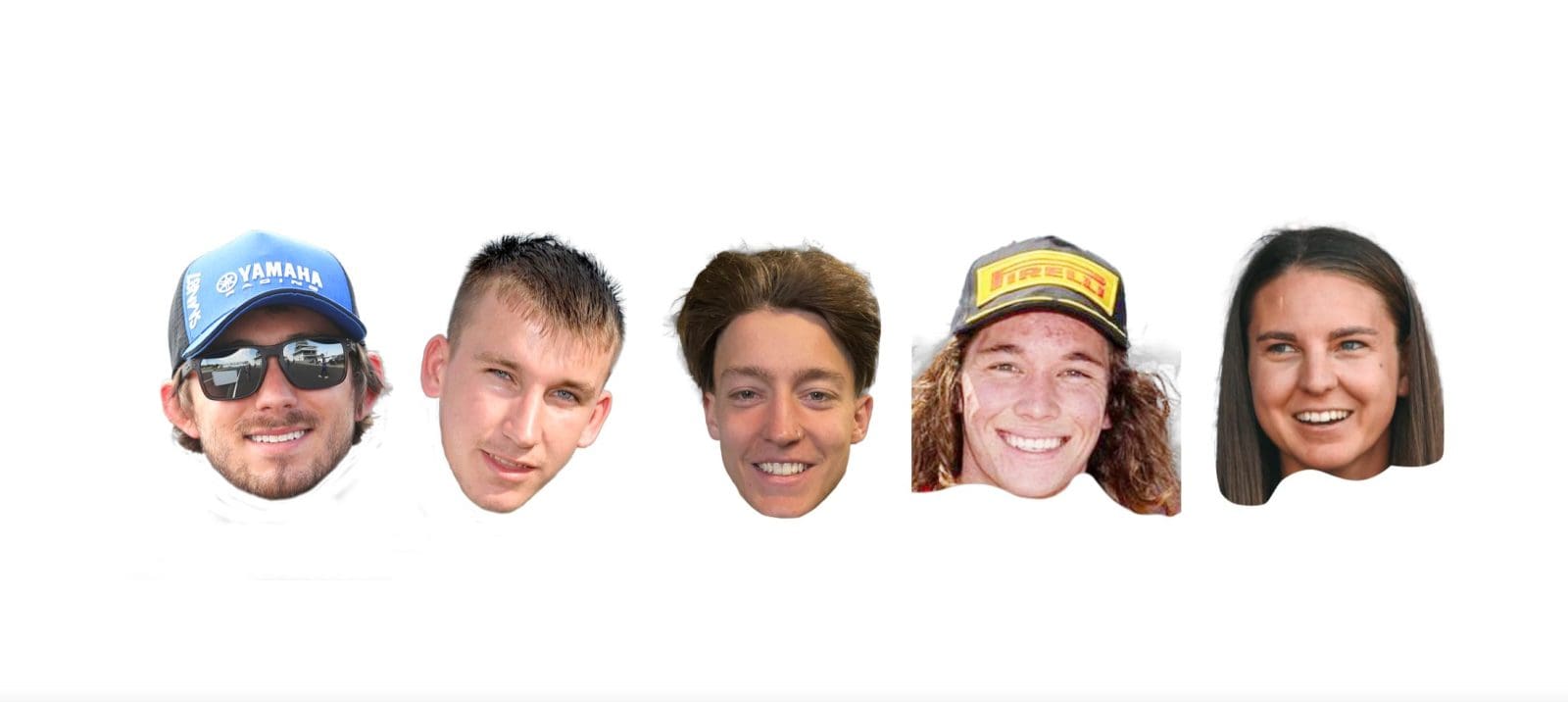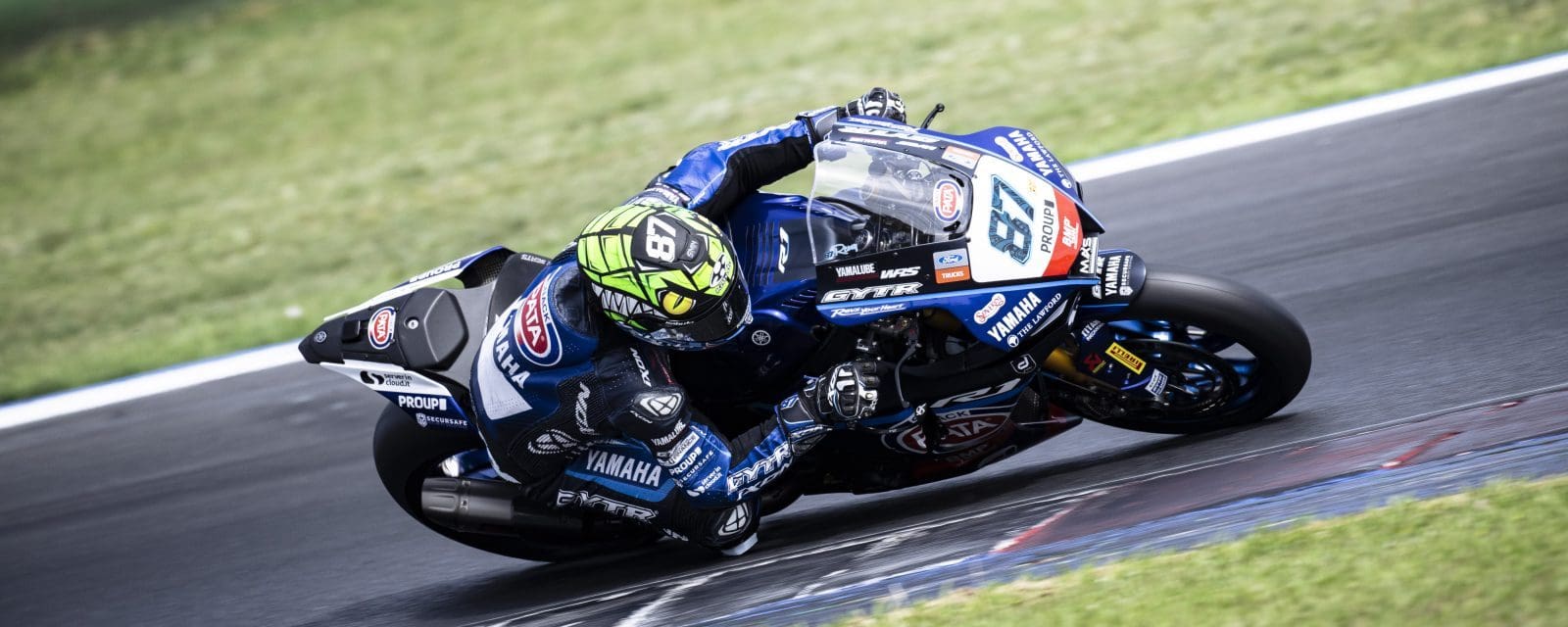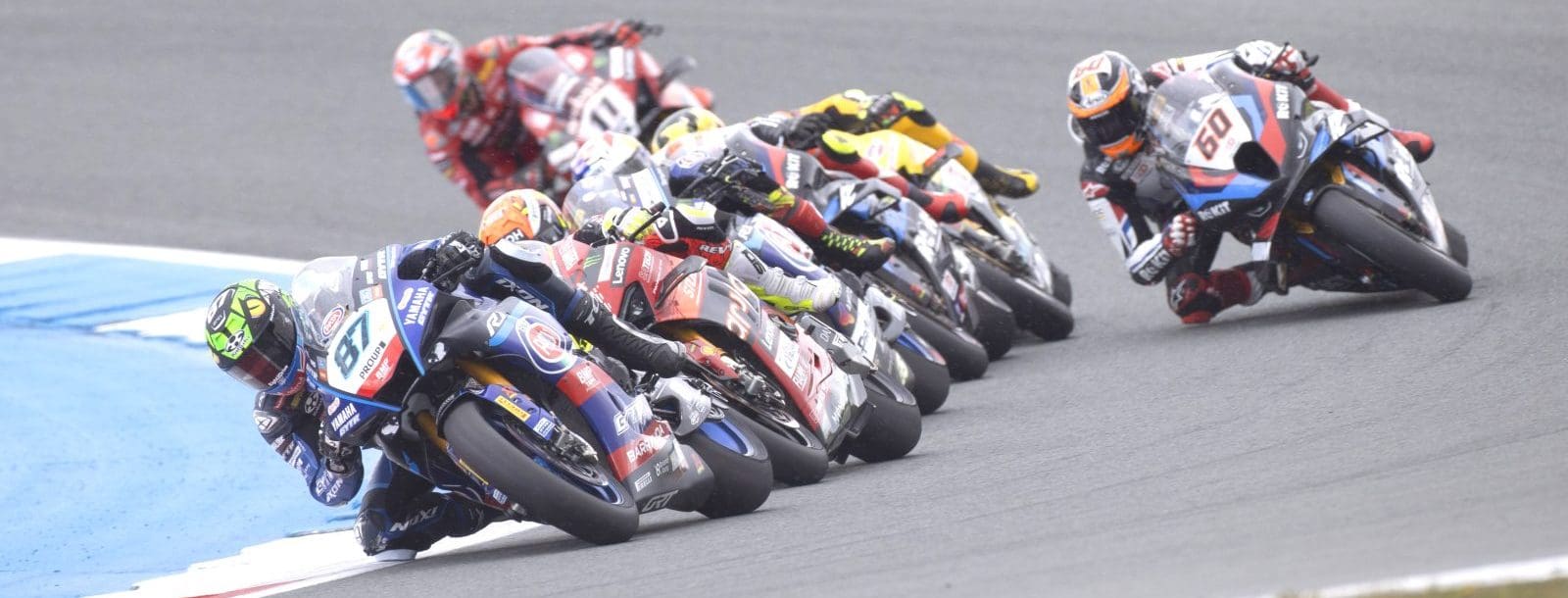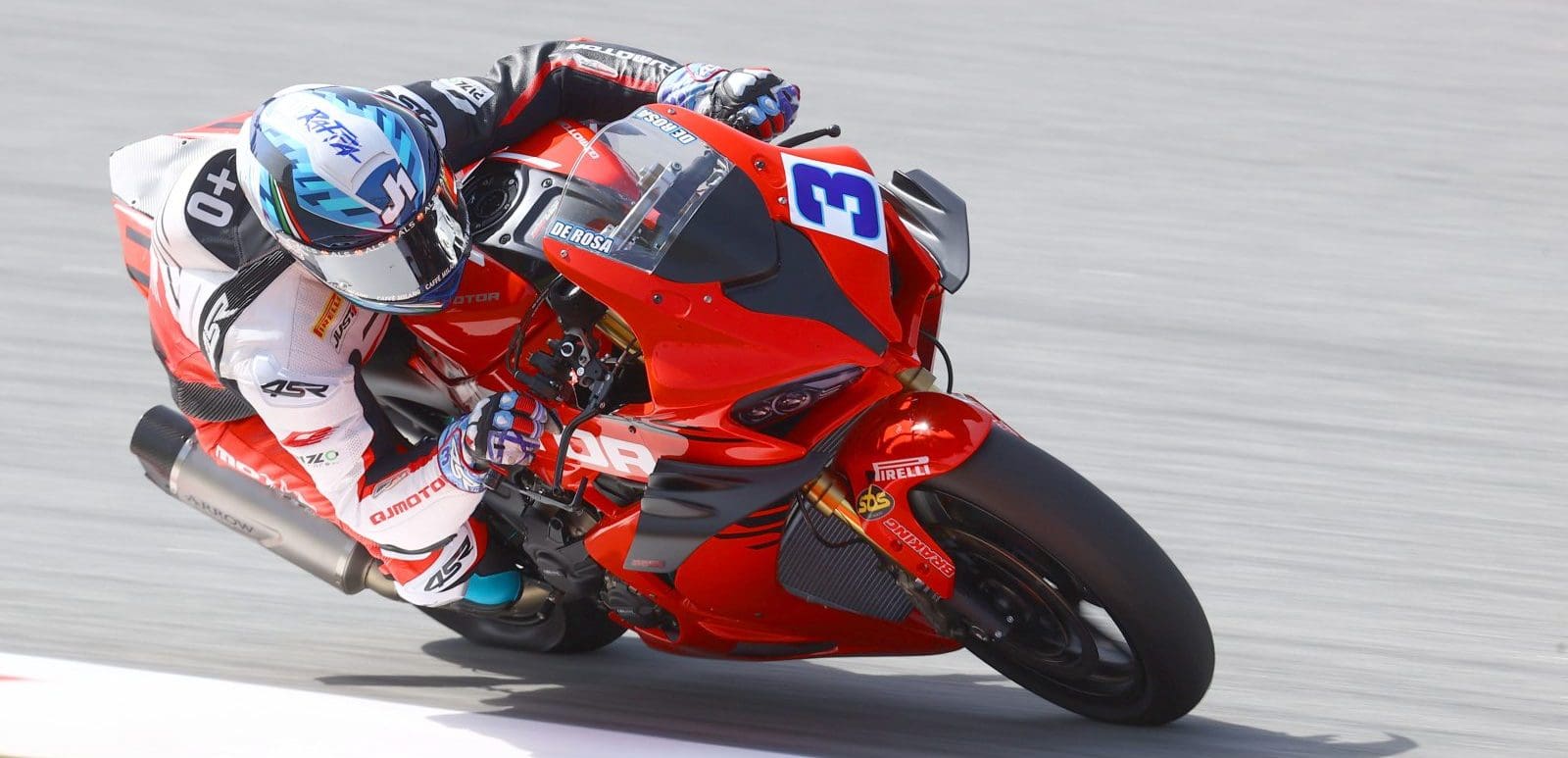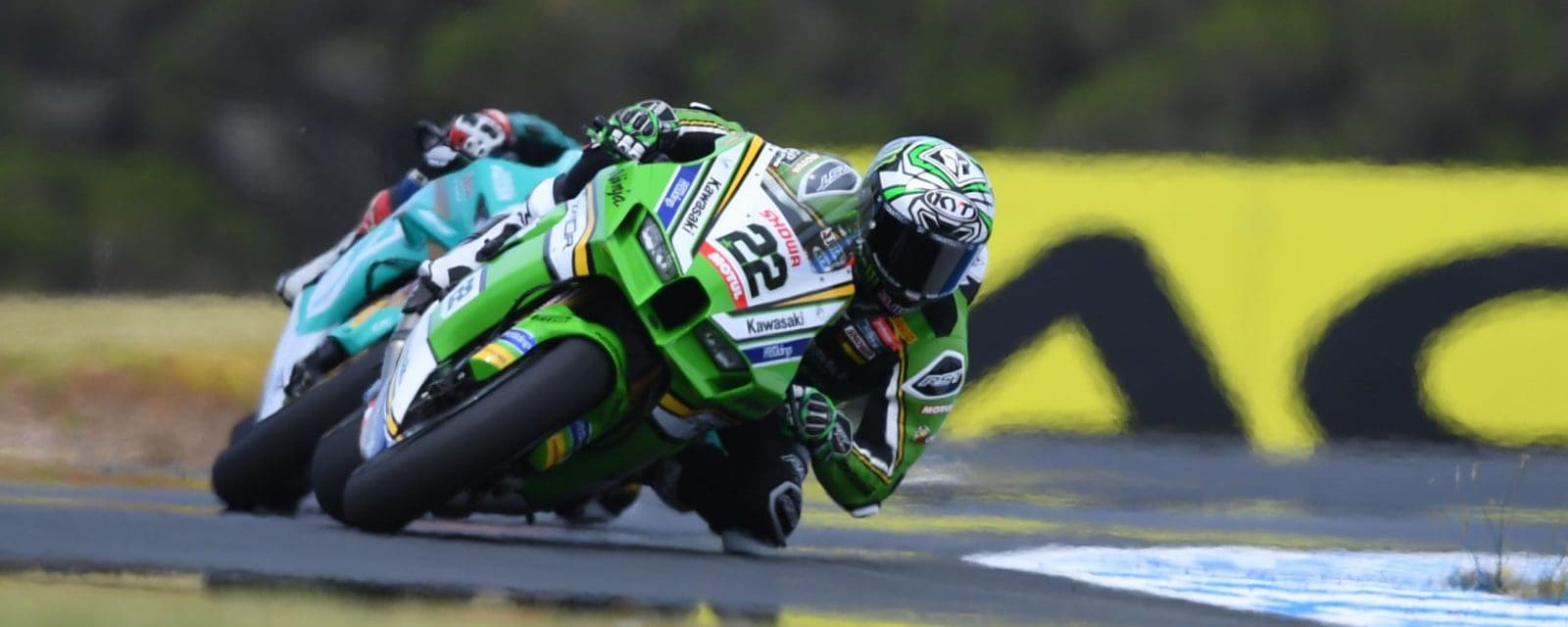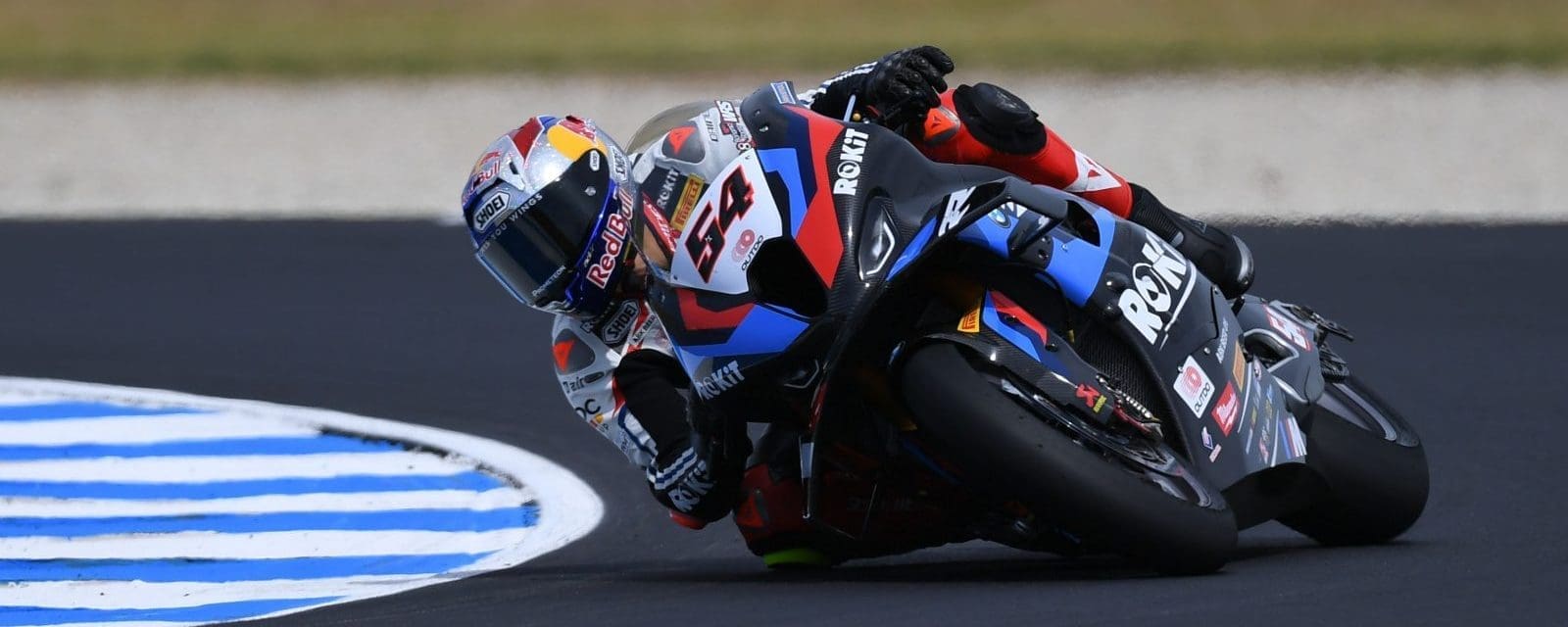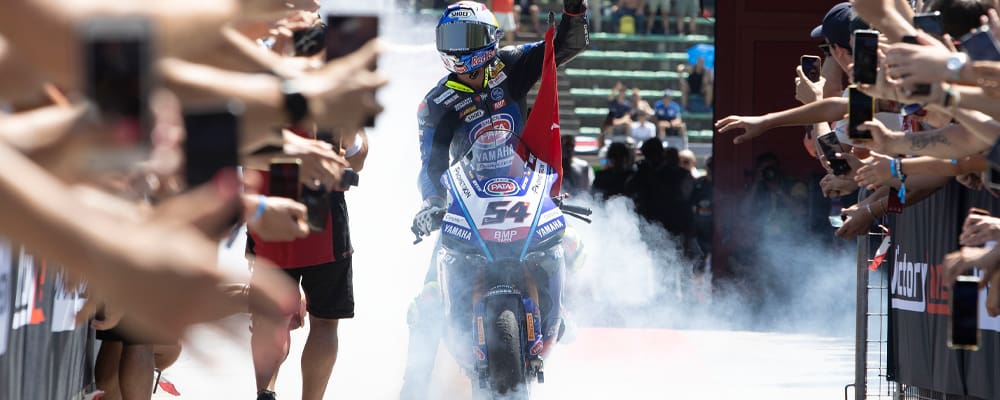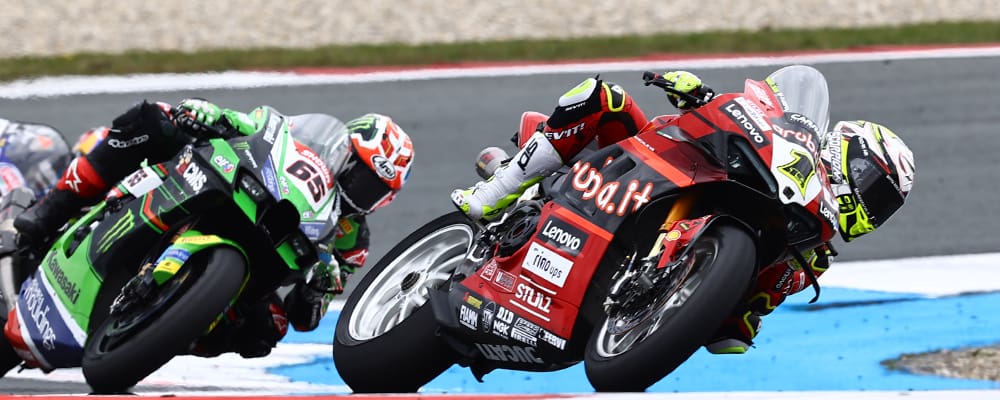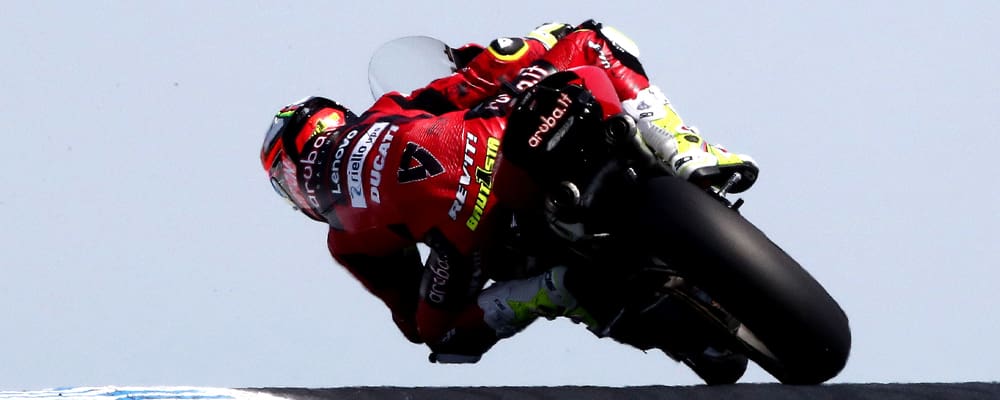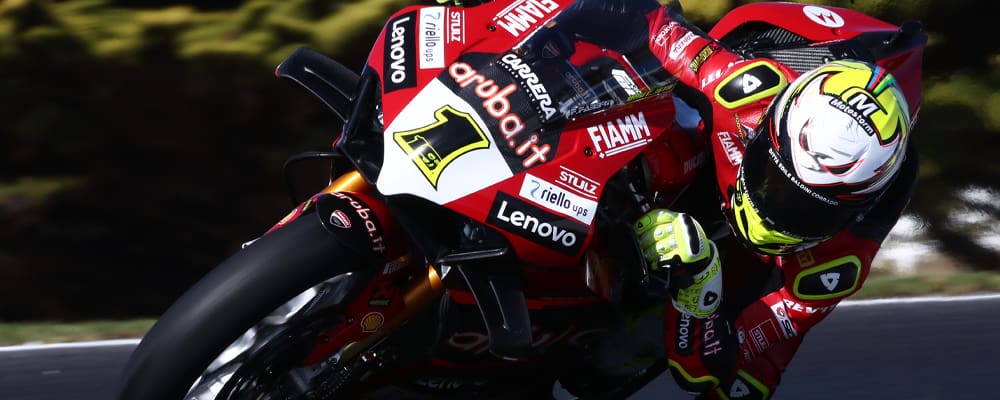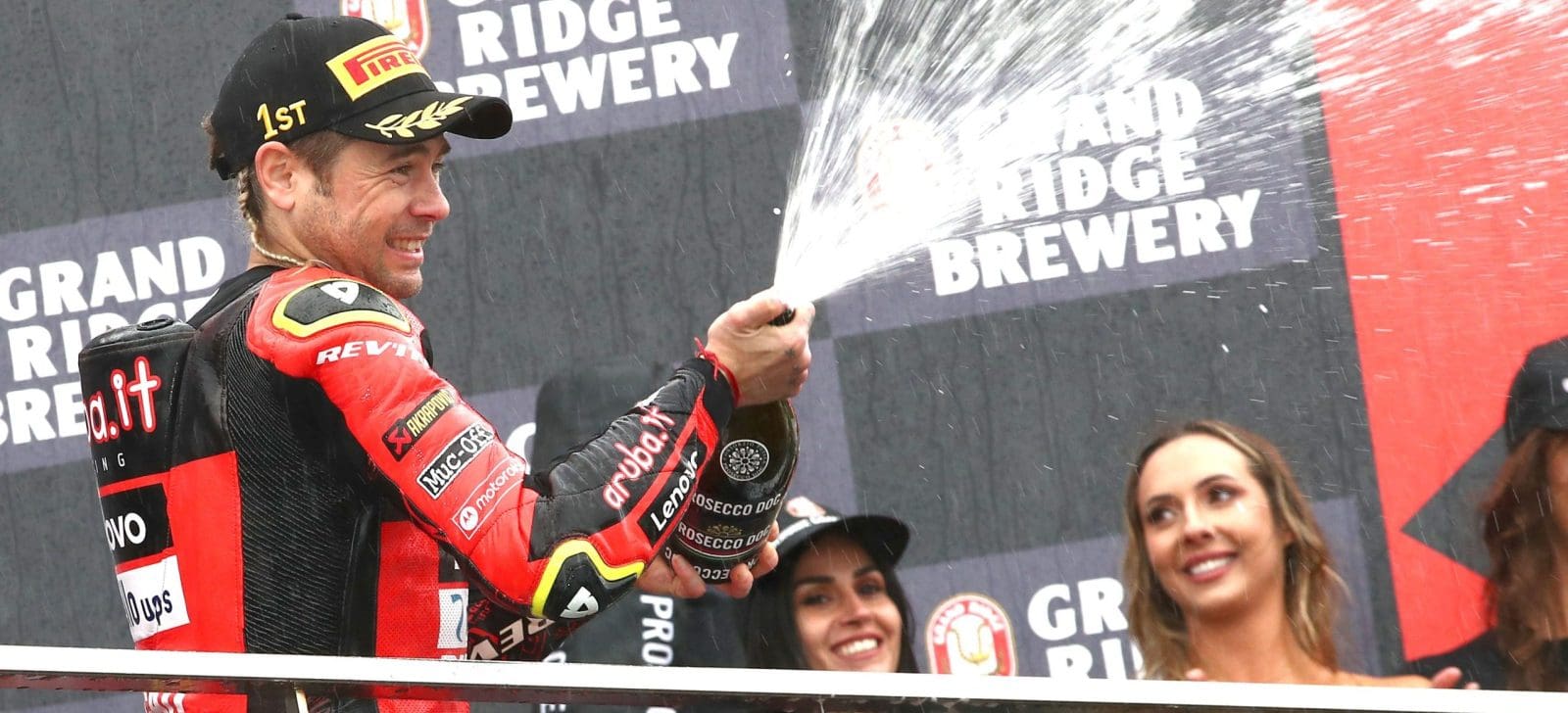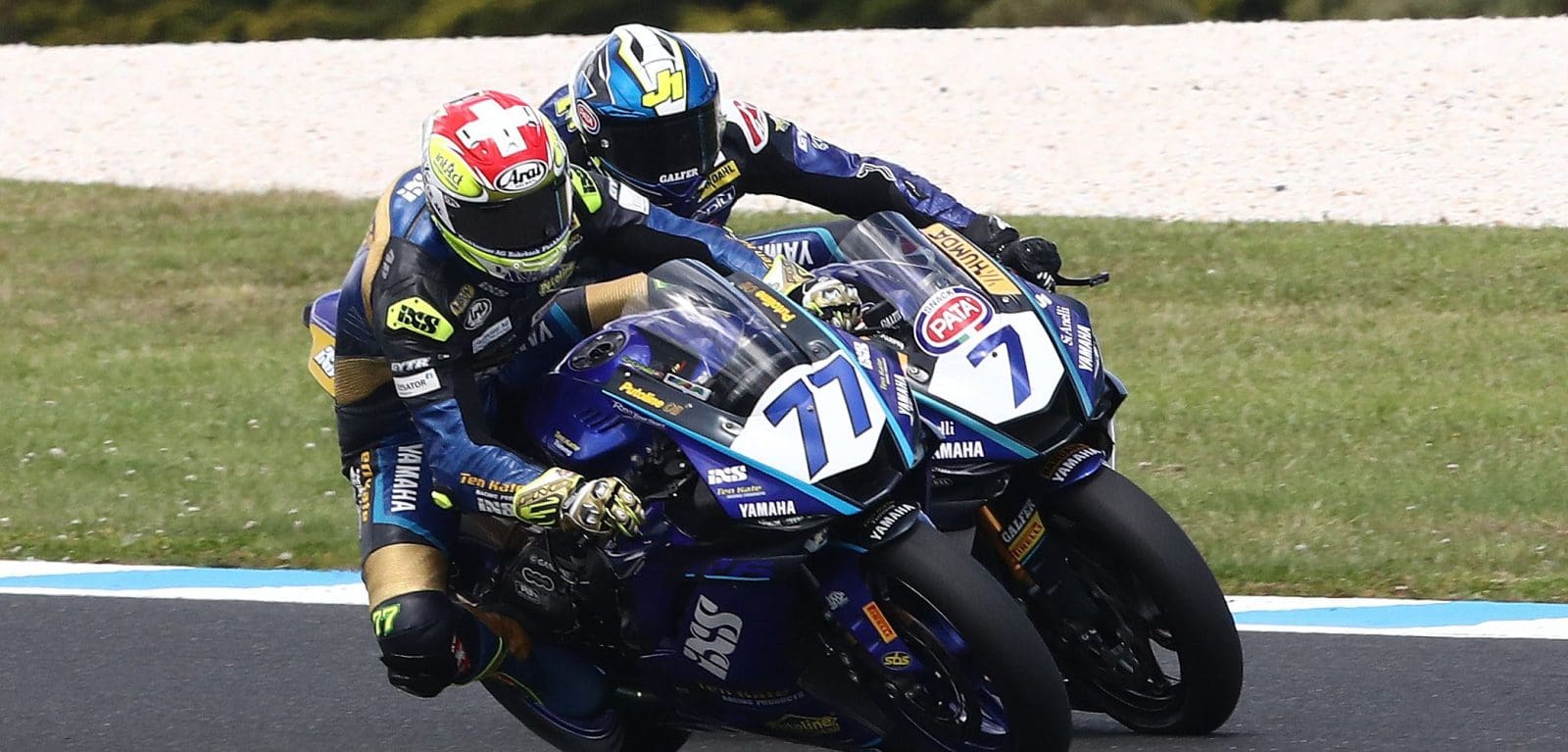The first season of World Superbikes had been an unexpected success. For 1989 the Japanese factories upped their support big-time, while Ducati hired ex-500cc GP rider Raymond Roche and made Marco Lucchinelli team manger.
Defending champion Fred Merkel had a full factory engine for his Honda RC30. Stephane Mertens had jumped ship from Bimota onto another factory-supported Honda. Fabrizio Pirovano’s Yamaha was the new OWO1 while Kawasaki riders had the new ZXR-750.
The season was extended to 11 rounds, including one in the US, but it nearly didn’t start. The financial backers behind Sports Marketing pulled the pin. With no major sponsor it had blown $1m on the 1988 season. The FIM was forced to take over.
Bimota’s new signing, Italian wild man Giancarlo Falappa, was the surprise package of the season, winning a race in the first round and vying for top three in the championship. Though sadly, for various reasons, Bimota slowly lost enthusiasm for the series and didn’t come to the final two rounds.
Early in November the leading riders arrived at Australia’s Oran Park in the same anxious state as the year before. Merkel had a two-point lead over Mertens, with Pirovano and Roche both within striking distance.
Overseas riders were angered by a lack of circuit safety improvements and threatened a boycott. Riders representative Swede Anders Andersson, lying sixth in the series on a Yamaha, demanded 1000 hay bales be installed. The FIM representative said it was “99 percent sure” that next year’s round would not be held at Oran Park.
Australian Yamaha rider Michael Dowson took advantage of a short break in damp conditions to grab pole position. Malcolm Campbell was second with Mertens third, followed by Roche and Dowson’s teammate Peter Goddard. Merkel was down in sixth, his same qualifying spot as in 1988. Pirovano was way down in 12th.
Typical sweeping Sydney showers greeted riders before Race One. Would it clear before the race ended? Goddard was the only one to start on slicks and his decision, which he later credited to his mentor Warren Willing, gave him a runaway win as the track slowly dried.
Early leader Phillis finished second, nearly a full minute behind, with Pirovano third and Roche fourth. They were the only riders not lapped by Goddard. Aaron Slight, Phillis’s new teammate in an expanded Kawasaki effort, finished fifth (he’d qualified eighth). Andersson was sixth, Dowson seventh and Mertens eighth.
Dowson led from start to finish in the second race, but Roche blasted out of 11th on the grid to get within two seconds of him. Then lapped traffic blunted his challenge. Phillis finished third, giving him the meeting’s overall win after Goddard crashed out. Mertens was fourth with Merkel fifth and Slight sixth.
Oran Park’s outdated layout was brutally demonstrated when Campbell and Pirovano, battling for a podium finish, came together. Pirovano appeared to miss a gear and run wide. Riders and bikes cartwheeled towards the tyre wall. Campbell later told a reporter: “I’m lucky to be talking to you.”
As the mess was cleaned up Pirovano was carried back to the pits by a team official. He had a broken ankle.
In the championship wash-up, Mertens had pushed ahead of Merkel by just three points while Roche had leapfrogged Pirovano. New Zealand was shaping up to be another ripper round.
Wet weather gods
Just as in 1988, the weather played a big hand in proceedings at the final round of the 1989 World Superbike Championship at Manfield.
Merkel grabbed pole, ahead of Campbell, Slight and Dowson, with Mertens starting from fifth. Pirovano didn’t appear at Manfield so Roche, although he had qualified down in ninth, looked to have locked up third place in the championship.
Race One, held in drizzling rain, saw one of World Superbike’s most bizarre accidents. UK Yamaha rider Terry Rymer seized the lead. Slow-starting Mertens battled his way back up to sixth but on lap 22 of 33 his front disc disintegrated and the bike speared off the track and burst into flames.
Merkel finished a safe third, behind Slight, earning valuable points. But to do this he had to see off a challenge from Dowson that could have easily derailed his championship. Phillis finished fifth behind Dowson. Mertens jumped on his spare Honda to win a dry Race Two by 22 seconds. Merkel didn’t panic, realising he didn’t have to win the race to win the championship.
It’s one thing to win a race, quite another to ride for points. Merkel found this out the hard way. At one point he was suddenly relegated to seventh by a hard-charging pack of Andrew Stroud (Yamaha), Dowson, Campbell and Phillis.
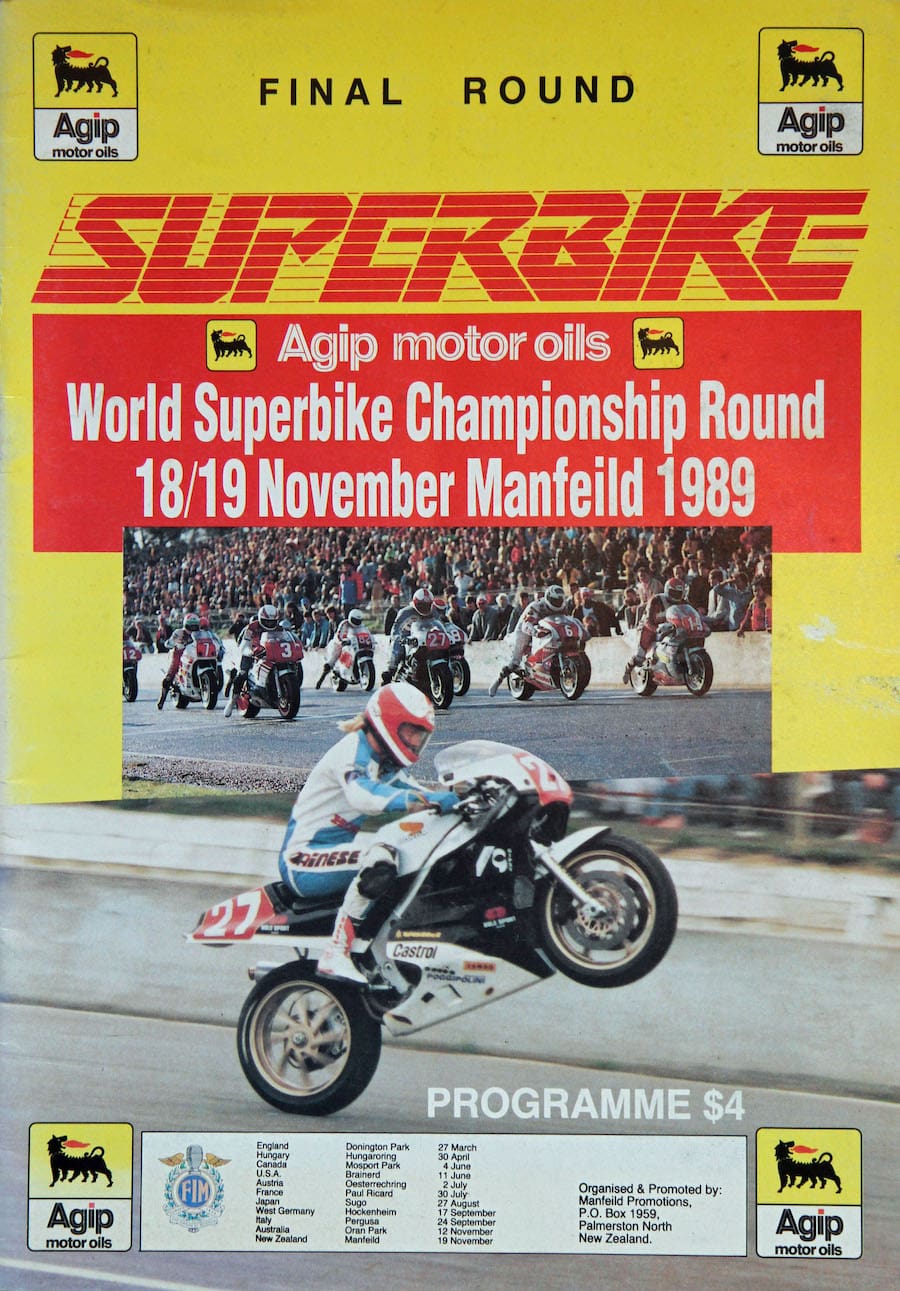
He stayed calm, picking off riders as the race wound down to finish third behind Campbell. Fred Merkel had won his second World Superbike title, just seven points clear of Mertens.
Roche’s Ducati reliability issues returned and the tough little Frenchman was forced to retire from both races. But his persistence and some good luck saw him retain third in the championship. The highest placed Ducatis at Manfield were Kiwi riders Glenn Williams, eighth in Race One and Mike King, 17th in Race Two.
An indication of the ferocity of Race Two was Slight’s new lap record of 1m08.170s, set early in the race before he crashed out. It was an amazing three seconds quicker than Mertens’ record from the year previous.
The first two years of World Superbikes had delivered. For 1990 the stakes would be raised again, and Honda’s RC30 would be relegated to the history books by three years of Ducati domination. Australia and its riders had become an integral part of the championship over the next decade.
Meanwhile, as that decade dawned, Phillis and Slight would launch Kawasaki’s return to world championship racing as a factory effort under the direction of Peter Doyle.
As predicted, World Superbikes moved from Oran Park to Phillip Island’s new Grand Prix circuit. Manfield would continue to host the final round, last hosting it in 1992. Oran Park was shut down in 2010.
An era had ended but a much bigger epoch of Superbike racing was about to start.
The Phillis X-factor
Often overlooked in the history of World Superbikes is the contribution Aussie rider Robbie Phillis made. His mentor of the time and crew chief Peter Doyle asks this question: “How many people sign their first international race contract at age 34?”
When Doyle signed up Phillis and Kiwi Aaron Slight to contest the 1990 World Superbike series, Phillis was at the peak of his powers. He’d won six Australian Superbike championships, along with other major one-off races. The crowning achievement was his 1989 round win at Oran Park.
In announcing the deal, which involved basing the team in Germany and contesting all 14 rounds of the world championship, Doyle predicted a top-four finish for the team.
“If you averaged out his results on the rounds contested in 1988 and 1989 he would have won both championships,” Doyle said in early 1990. “Consistency is the key to the World Superbike Championship.”
As predicted, in 1990 Phillis finished fourth in the riders championship and Kawasaki fourth in the manufacturers points table. Phillis was pushing 40 when he finally retired from international racing. He never won a world championship but imagine what could have happened if he’d signed a similar deal a decade earlier when he was 24 years old?
His contribution to Kawasaki’s return to world championship racing, along with that of Peter Doyle’s as team manager, paved the way for Scott Russell and his American Muzzy team to win the title in 1993, ending three years of Ducati dominance.
That road to a world championship for Kawasaki started right here in Australian Superbike racing.
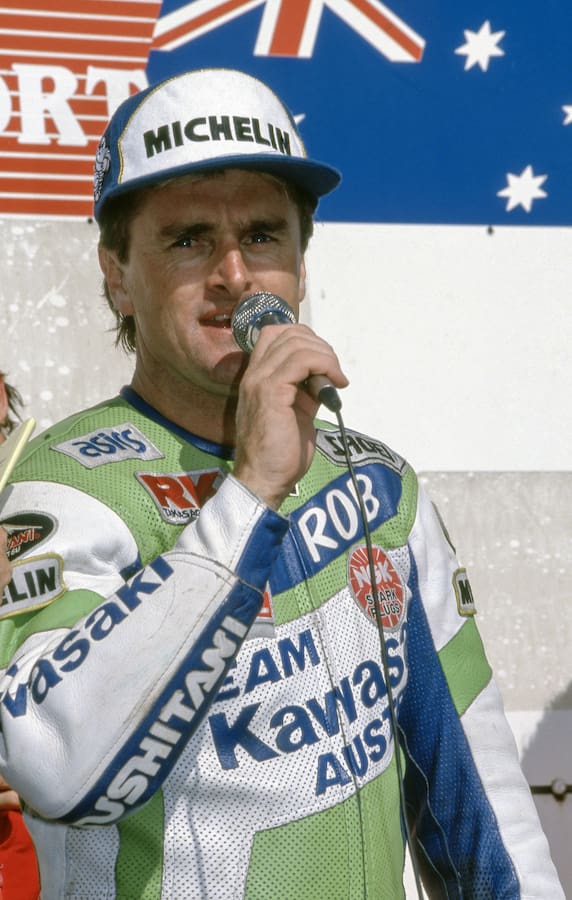
Still living the dream
“When I think back to the early days of World Superbikes I ask myself, ‘how did we do that?’,” says Kiwi Eddie Kattenberg. In 1989 he bought a Suzuki GSX-R750 from his local bike shop and fronted the final round of the series at NZ’s Manfield circuit.
Only basic race preparation was undertaken but ‘The Kat’ qualified 21st and finished 11th and 13th ahead of some big names. A year later he was racing a factory-supported Yamaha OWO1 for the Len Willing Motorcycles team in Australia.
Bimota’s YB4 was a dream bike for self-funded racers like Kattenberg until classic racing expanded to include a Pre-1990 class. Three years ago Eddie bought his YB8, an evolution of the FZR750-powered YB4, from a wrecking yard in Japan. He turned it into a racer and set class lap records at Taupo, Manfield and Ruapuna.
“The engine is still a Yamaha FZR1000 but I’ve fitted YZF750 camshafts and a six-speed close-ratio gearbox,” he says.
Despite not winning the inaugural world superbike championship, Bimota enjoyed its best ever sales year in 1988. Of the more than 800 machines sold worldwide, 237 were the fuel-injected YB4.
Words Hamish Cooper Photography Phil Aynsley & Steve Green
